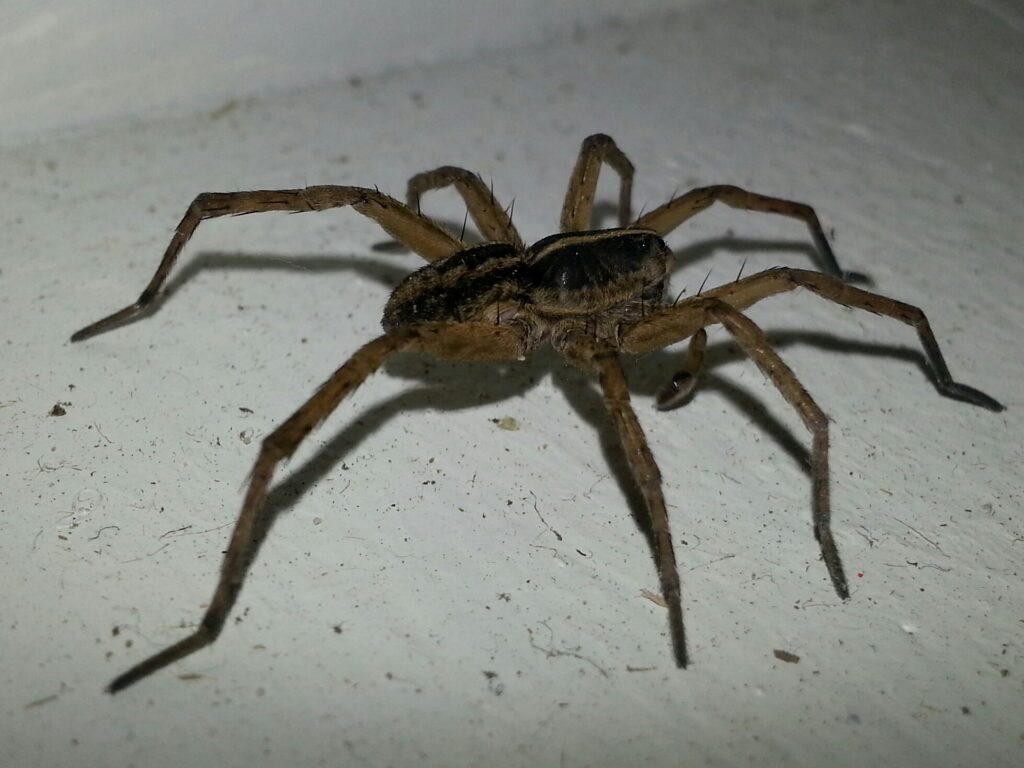 If you're a homeowner in Toronto, you've likely heard of the ongoing battle with carpenter ants. These tiny invaders can cause big problems if not properly managed. It’s important to understand how to find a carpenter ant nest and how to get rid of them effectively. As an expert from Truly Nolen, I’m here to guide you through the complexities of these ants and help you understand which species are most common in our area.
If you're a homeowner in Toronto, you've likely heard of the ongoing battle with carpenter ants. These tiny invaders can cause big problems if not properly managed. It’s important to understand how to find a carpenter ant nest and how to get rid of them effectively. As an expert from Truly Nolen, I’m here to guide you through the complexities of these ants and help you understand which species are most common in our area.
Understanding Carpenter Ants
Carpenter ants are among the largest types of ants found in Canada. They are known for their wood-boring habits, which can result in significant damage to homes. But don't worry—these ants aren't actually eating the wood. Rather, they're excavating it to create their nests, which can weaken the structure of your home over time. Identifying these ants is crucial for effective management and prevention. In Toronto, certain species are more prevalent due to the local climate and environment. Recognizing these species can help homeowners take the necessary steps to prevent infestations. Generally, carpenter ants are black or dark brown, with workers ranging from 3/8 to 1/2 inch in size. The queen is larger, sometimes reaching up to an inch. While their size can vary slightly between species, their behaviour is quite similar. Carpenter ants tend to be most active during the spring and summer months when they're out foraging for food and expanding their colonies. They prefer moist or decaying wood, making areas like basements, attics, and crawl spaces ideal nesting sites. If you're noticing sawdust-like material or hearing rustling noises in your walls, these could be signs of an infestation that requires immediate attention.Black Carpenter Ants
 The most common species in Toronto is the Black Carpenter Ant, scientifically known as Camponotus pennsylvanicus. This species is notorious for invading homes and is typically attracted to moist wood. They are primarily black, but some may have reddish hues on parts of their body. Black Carpenter Ants are particularly prevalent during the warmer months, especially after a rainstorm when the wood is damp and easy to tunnel through.
These ants can cause substantial structural damage if left unchecked, as they dig through wood to build their nests. Unlike termites, they don't consume the wood but instead remove it to create galleries for their colonies. Their presence is often signalled by small piles of wood shavings, which they expel from their tunnels. This behaviour makes them easier to spot compared to other pests that might be more discreet.
It's important to address Black Carpenter Ant infestations promptly. The longer they're allowed to inhabit your home, the more extensive the damage can become. Professional pest control services, like those offered by Truly Nolen, are typically needed to fully eradicate these ants and repair any damage they may have caused. Our team is trained to identify and target these specific species, ensuring effective removal and prevention.
The most common species in Toronto is the Black Carpenter Ant, scientifically known as Camponotus pennsylvanicus. This species is notorious for invading homes and is typically attracted to moist wood. They are primarily black, but some may have reddish hues on parts of their body. Black Carpenter Ants are particularly prevalent during the warmer months, especially after a rainstorm when the wood is damp and easy to tunnel through.
These ants can cause substantial structural damage if left unchecked, as they dig through wood to build their nests. Unlike termites, they don't consume the wood but instead remove it to create galleries for their colonies. Their presence is often signalled by small piles of wood shavings, which they expel from their tunnels. This behaviour makes them easier to spot compared to other pests that might be more discreet.
It's important to address Black Carpenter Ant infestations promptly. The longer they're allowed to inhabit your home, the more extensive the damage can become. Professional pest control services, like those offered by Truly Nolen, are typically needed to fully eradicate these ants and repair any damage they may have caused. Our team is trained to identify and target these specific species, ensuring effective removal and prevention.
Red Carpenter Ants
 Another species you might encounter in Toronto is the Red Carpenter Ant, or Camponotus ferrugineus. These ants are slightly smaller than their black counterparts and have a distinctive reddish-brown coloration. While they share many behaviours with Black Carpenter Ants, the red variety is often found in different environments, favouring drier wood.
Red Carpenter Ants can also cause significant damage, though they tend to be less aggressive in their tunnelling compared to Black Carpenter Ants. They typically build satellite nests away from the main colony, often in wall voids or insulation. This behaviour can make them a bit trickier to locate and eliminate, as the nest may not be directly connected to visible signs of damage.
In dealing with Red Carpenter Ants, attention to detail is crucial. It's important to inspect potential nesting sites thoroughly and address any moisture issues that could attract these pests. Truly Nolen's experts have the experience and tools needed to track down and eliminate these nests, using strategies that are safe for both you and the environment.
Another species you might encounter in Toronto is the Red Carpenter Ant, or Camponotus ferrugineus. These ants are slightly smaller than their black counterparts and have a distinctive reddish-brown coloration. While they share many behaviours with Black Carpenter Ants, the red variety is often found in different environments, favouring drier wood.
Red Carpenter Ants can also cause significant damage, though they tend to be less aggressive in their tunnelling compared to Black Carpenter Ants. They typically build satellite nests away from the main colony, often in wall voids or insulation. This behaviour can make them a bit trickier to locate and eliminate, as the nest may not be directly connected to visible signs of damage.
In dealing with Red Carpenter Ants, attention to detail is crucial. It's important to inspect potential nesting sites thoroughly and address any moisture issues that could attract these pests. Truly Nolen's experts have the experience and tools needed to track down and eliminate these nests, using strategies that are safe for both you and the environment.
Signs of Infestation
Recognizing the signs of a carpenter ant infestation is the first step in addressing the problem. These pests are generally nocturnal, so you may not see them during the day. Instead, look for indications such as wood shavings, rustling noises within walls, and the presence of winged ants, which are reproductive males and females out to establish new colonies. A common misconception is that seeing just one or two ants indoors isn't a cause for concern. In reality, this could be the tip of the iceberg, as carpenter ants send scouts in search of food. If they find a plentiful supply, they will leave a pheromone trail for others to follow. This behaviour can quickly lead to a full-blown infestation if not addressed promptly. To determine if you have a carpenter ant problem, inspect areas of your home where wood is exposed, especially if it's in contact with moisture. Basements, attics, and areas around windows and doors are prime locations. If you're unsure or feel overwhelmed, contacting a professional service like Truly Nolen can provide clarity and peace of mind.How to Get Rid of Carpenter Ants
 Preventing carpenter ant infestations requires vigilance and proactive measures. One of the most effective strategies is to reduce moisture levels in and around your home. This can be achieved through proper ventilation, repairing leaks, and ensuring that gutters and downspouts direct water away from the foundation.
Regular maintenance of your home's exterior is also important. Seal any cracks or crevices that could provide entry points for ants, and trim trees or shrubs that come into contact with the structure. Keeping firewood and other wooden materials stored away from your home can also help deter ants from making their way inside.
When prevention isn't enough, professional intervention becomes necessary. This is where Truly Nolen comes in. Our team uses advanced techniques and environmentally friendly solutions to target and eliminate carpenter ants. We focus not only on removing existing colonies but also on preventing future infestations, giving you long-lasting protection and peace of mind.
Preventing carpenter ant infestations requires vigilance and proactive measures. One of the most effective strategies is to reduce moisture levels in and around your home. This can be achieved through proper ventilation, repairing leaks, and ensuring that gutters and downspouts direct water away from the foundation.
Regular maintenance of your home's exterior is also important. Seal any cracks or crevices that could provide entry points for ants, and trim trees or shrubs that come into contact with the structure. Keeping firewood and other wooden materials stored away from your home can also help deter ants from making their way inside.
When prevention isn't enough, professional intervention becomes necessary. This is where Truly Nolen comes in. Our team uses advanced techniques and environmentally friendly solutions to target and eliminate carpenter ants. We focus not only on removing existing colonies but also on preventing future infestations, giving you long-lasting protection and peace of mind.

